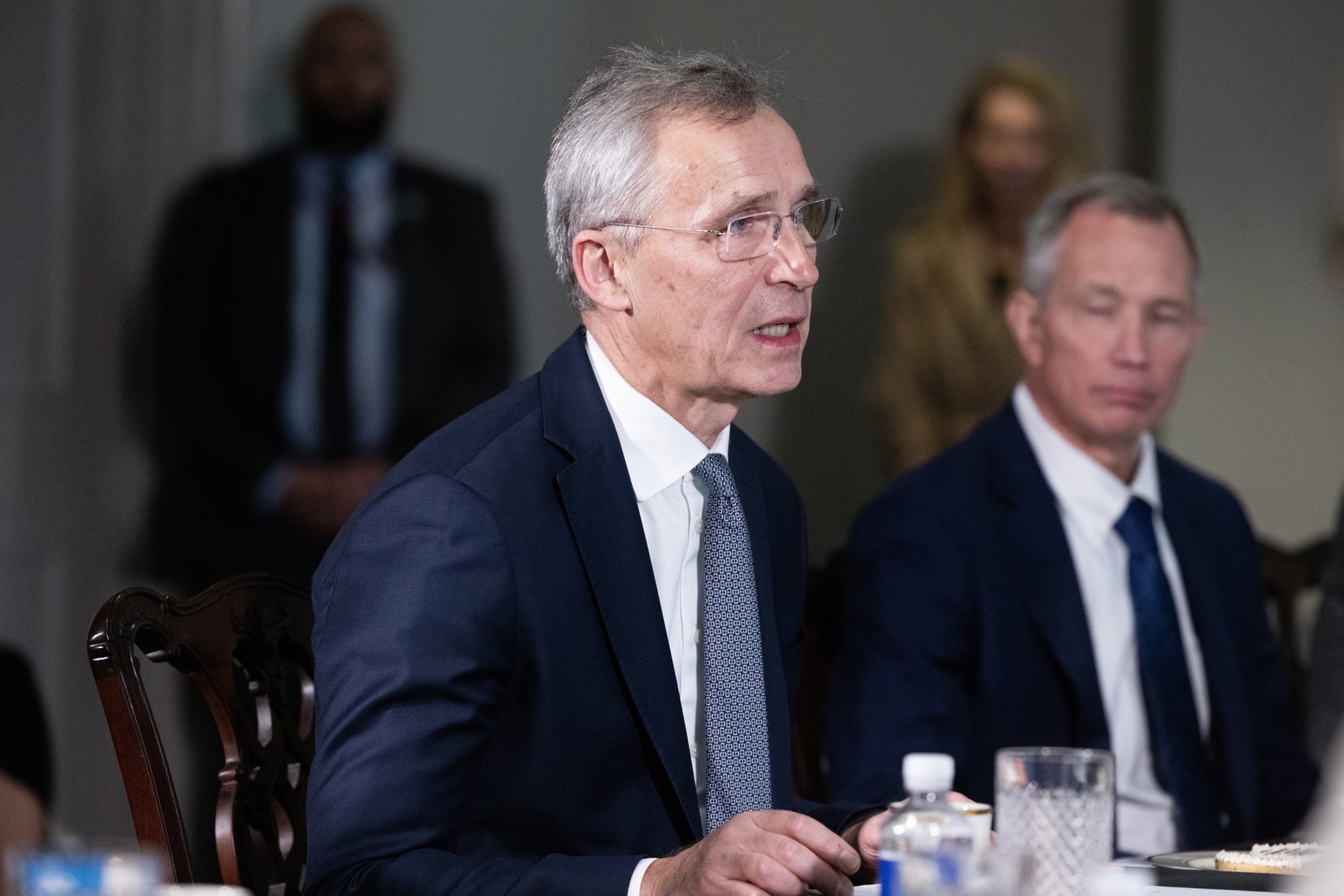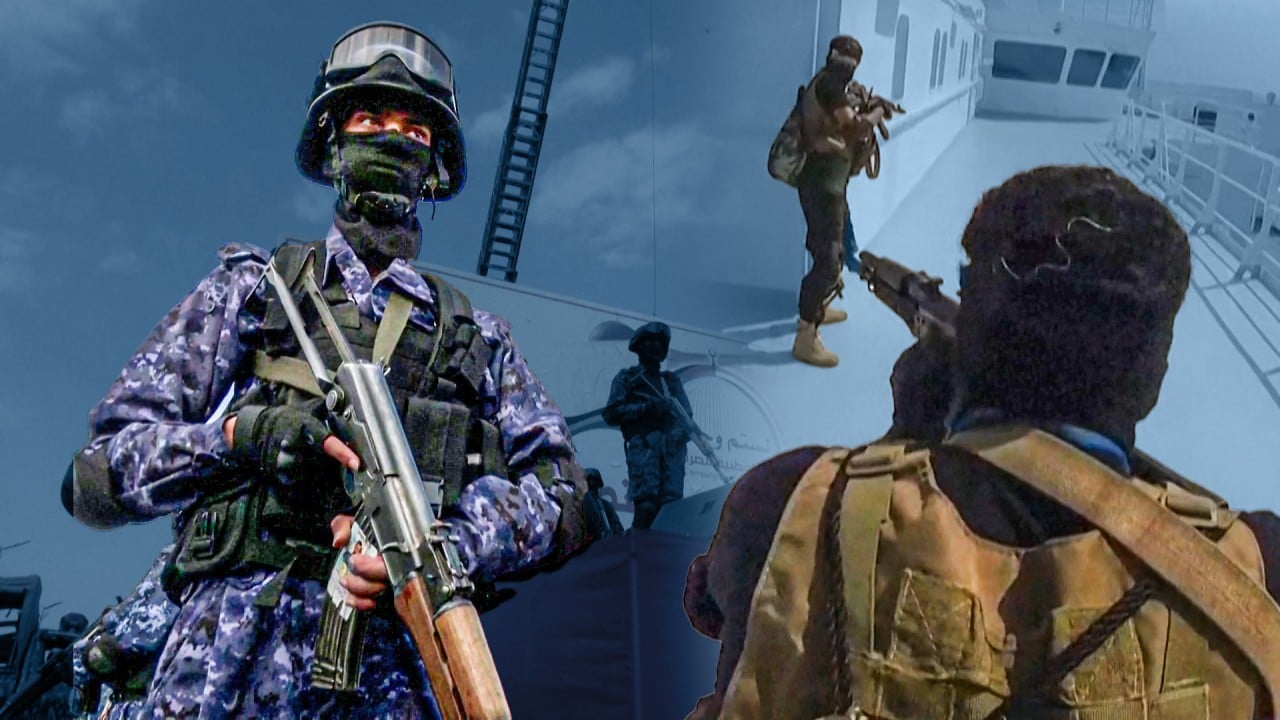
US defence chief Lloyd Austin vows ‘all necessary actions’ after US troop deaths
- Austin returned to work at the Pentagon on Monday after nearly a month’s absence because of complications from prostate cancer
- Austin on Monday met Nato Secretary General Jens Stoltenberg a day after Iran-backed militants killed three US troops and wounded dozens more
US Defence Secretary Lloyd Austin vowed on Monday that the United States would take “all necessary actions” to defend its troops after a drone attack by Iran-backed militants that killed three US troops and wounded dozens more.
Austin returned to work at the Pentagon on Monday after nearly a month’s absence because of prostate cancer and was meeting Nato Secretary General Jens Stoltenberg.
The attack on Sunday was the first deadly strike against US forces since the Israel-Gaza war erupted in October, and marks a major escalation in tensions that have engulfed the Middle East.
“Let me start with my outrage and sorrow [for] the deaths of three brave US troops in Jordan and for the other troops who were wounded,” Austin said at the Pentagon.
“The president and I will not tolerate attacks on US forces and we will take all necessary actions to defend the US and our troops,” Austin added at the start of meeting with Nato Secretary General Jens Stoltenberg.

The United States is trying to determine exactly why the nearly 350 troops at the base in Jordan, known as Tower 22, were unable to stop the drone.
Two officials said a US drone was approaching the base around the same time the attack drone was incoming. One of the officials said the attack drone was also flying low, factors that may have contributed to it being missed by base defences.
US troops have been attacked more than 150 times in Iraq, Syria and Jordan as well as on warships in the Red Sea, where Houthi fighters in Yemen have been firing drones and missiles at them.
The attacks are piling political pressure on US President Joe Biden to deal a blow directly against Iran, a move he has been reluctant to do out of fear of igniting a broader war.
Biden met Austin and other members of his national security team in the White House Situation Room on Monday morning to discuss the latest developments regarding the attack, the White House said.
The president’s response options could range anywhere from targeting Iranian forces outside to even inside Iran, or opting for a more cautious retaliatory attack solely against the Iran-backed militants responsible, experts say.
At the start of the meeting, Austin referred to his return to work, saying: “At this important time, I’m glad to be back at the Pentagon. I feel good and recovering well, but still recovering, and I appreciate all the good wishes that I have received thus far.”
Austin was last in the Pentagon on December 21. He had been diagnosed with prostate cancer earlier in December and he went to a hospital for a surgical procedure for the cancer on December 22. He worked the following week from home.
On January 1, Austin was taken by ambulance to Walter Reed National Military Medical Centre after experiencing extreme pain and was admitted to the intensive care unit.
He stayed there for two weeks but did not tell the White House or his deputy that he had cancer, had surgery or had been taken back to the hospital and put in intensive care until days later.
He told Biden and other White House leaders about his diagnosis only after he had been in hospital more than a week.
Austin’s lack of disclosure has prompted changes in federal guidelines and has triggered an internal Pentagon review and an inspector general review into his department’s notification procedures. Both reviews are ongoing.
Austin has been working from home since he got out of the hospital on January 15, and he made his first public appearance early last week during a virtual Ukraine contact defence group meeting. He gave opening remarks for the meeting via video camera that was streamed online.
Doctors at Walter Reed said on Friday that Austin’s prognosis is excellent and no further treatments will be needed.
Austin has been criticised for keeping secret his prostate cancer diagnosis, surgery and subsequent hospitalisation with complications from the procedure.
He was diagnosed in early December and had what the Pentagon described as a “minimally invasive surgical procedure”, called a prostatectomy, to treat the cancer on December 22.
He was under general anaesthesia during this procedure and had transferred some authorities to his deputy defence secretary, Kathleen Hicks. He was discharged the next day and continued to perform his duties.
Additional reporting by Associated Press


